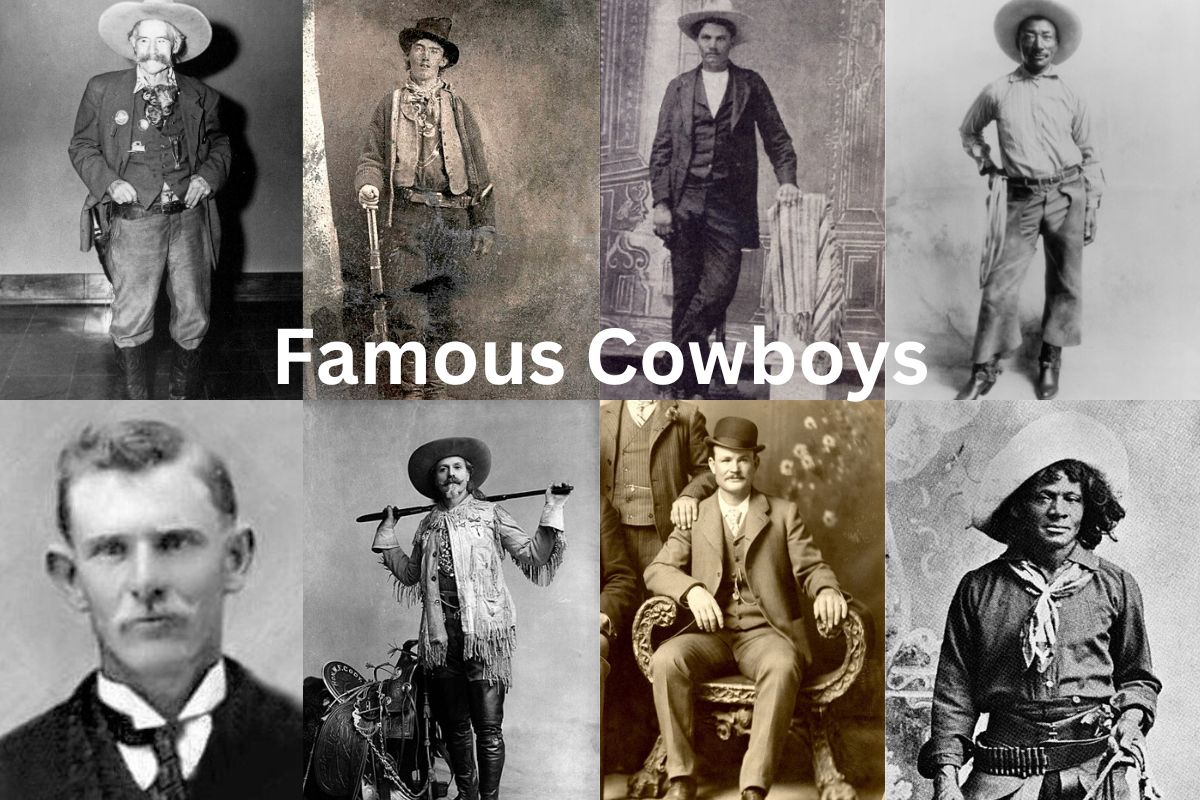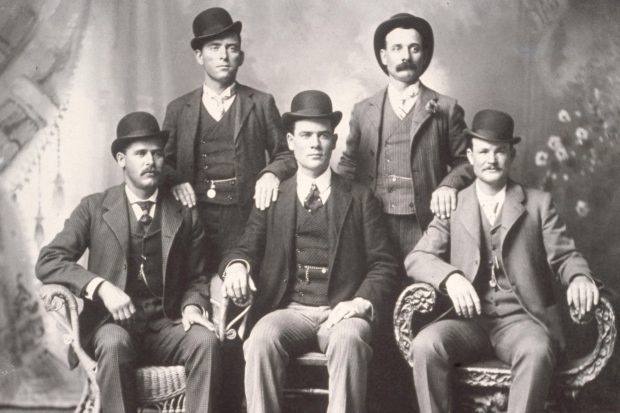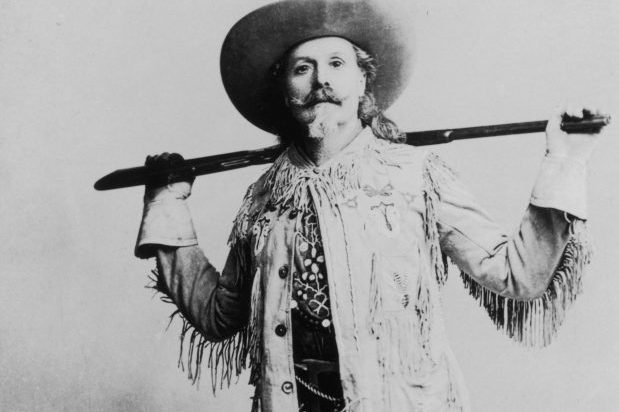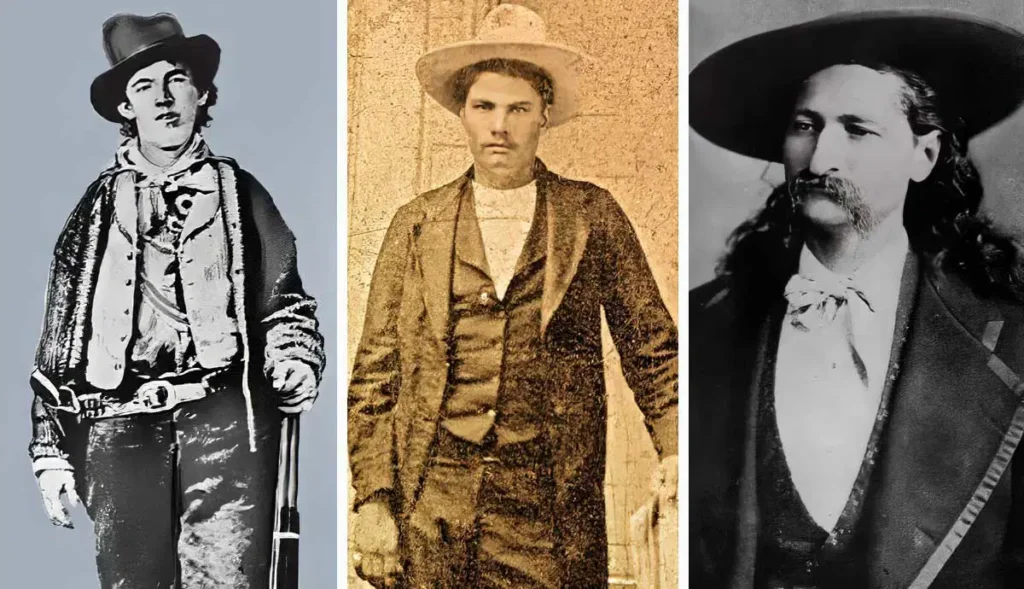“Legends of the Wild West: 13 Famous Cowboys and Gunslingers”

The American Wild West, spanning roughly from the end of the Civil War in 1865 to the early 20th century, was a place of lawlessness, adventure, and transformation. It was a time when justice often came at the end of a gun barrel, when legends were forged in dusty saloons and on the open prairie, and when real-life cowboys, lawmen, and outlaws captured the public imagination with their daring, defiance, and sometimes deadly deeds.
This era gave rise to some of the most famous—and infamous—figures in American history. These 13 cowboys and gunslingers became icons of the West, whether by upholding the law, breaking it, or dancing along the line between both.

1. Wild Bill Hickok (1837–1876)
Gambler, Lawman, Sharpshooter
A Union soldier during the Civil War, James Butler “Wild Bill” Hickok earned fame as a lawman in the rough towns of Kansas and Nebraska. Known for his long flowing hair, twin pistols, and calm trigger finger, he was both feared and respected. Hickok survived numerous duels but was murdered while playing poker in Deadwood, South Dakota. He was holding what became known as the “dead man’s hand”—aces and eights.
2. Billy the Kid (1859–1881)
Outlaw, Cattle Rustler, Gunman
Born Henry McCarty, later known as William H. Bonney, Billy the Kid was a teenage gunslinger who reportedly killed 21 men before the age of 21. He became famous during the Lincoln County War in New Mexico and evaded capture numerous times. In 1881, Sheriff Pat Garrett finally tracked him down and killed him. Billy’s youthful charisma and violent end turned him into an American folk hero.
3. Jesse James (1847–1882)
Confederate Guerrilla, Outlaw, Bank and Train Robber
A former Confederate guerrilla, Jesse James led the James–Younger Gang, which terrorized banks, stagecoaches, and railroads across the Midwest. To many, he was a Robin Hood figure; to others, a ruthless murderer. His life ended with betrayal—shot in the back by gang member Robert Ford, who hoped to claim a reward and fame.
4. Butch Cassidy (1866–1908?)
Outlaw, Train Robber, Gang Leader
Born Robert LeRoy Parker, Butch Cassidy led the Wild Bunch, a group known for its well-planned bank and train robberies. With his partner, the Sundance Kid, Cassidy fled the U.S. and reportedly died in a shootout with Bolivian police. However, rumors persist that he survived and lived in hiding for years.
5. The Sundance Kid (1867–1908?)
Sharpshooter, Outlaw, Partner to Butch Cassidy
Born Harry Alonzo Longabaugh, the Sundance Kid was known for his deadly aim and quiet charm. He and Cassidy fled to South America, where they continued their outlaw lifestyle. Their legendary partnership and supposed deaths in Bolivia inspired books and Hollywood films, notably Butch Cassidy and the Sundance Kid (1969).
6. Wyatt Earp (1848–1929)
Lawman, Gambler, Gunfighter
One of the most iconic lawmen in Wild West history, Wyatt Earp is best known for the Gunfight at the O.K. Corral in Tombstone, Arizona, where he and his brothers faced off against the Clanton gang. Although he lived much of his life as a gambler and entrepreneur, his myth was cemented as a tough, no-nonsense peacekeeper in a lawless land.
7. Doc Holliday (1851–1887)
Dentist, Gambler, Gunman
A close friend of Wyatt Earp, John Henry “Doc” Holliday was a dentist-turned-gunfighter who battled tuberculosis for most of his adult life. Known for his quick draw and icy composure, he played a key role in the O.K. Corral shootout. His frailty made his courage all the more legendary.

8. Annie Oakley (1860–1926)
Sharpshooter, Performer
One of the few women to earn fame in the Wild West era, Annie Oakley became a world-renowned markswoman with Buffalo Bill’s Wild West show. She could shoot coins in the air and split playing cards at a distance. Her fame helped challenge 19th-century gender roles and made her a symbol of female empowerment.
9. Buffalo Bill Cody (1846–1917)
Scout, Showman, Buffalo Hunter
William F. “Buffalo Bill” Cody hunted over 4,000 buffalo and served as a scout for the U.S. Army. But his real legacy came from his showmanship. Through Buffalo Bill’s Wild West, he brought cowboy drama and Native American culture to millions in the U.S. and Europe, shaping how the world viewed the American frontier.
10. John Wesley Hardin (1853–1895)
Outlaw, Gunfighter, Lawyer
Known for his volatile temper and fast draw, John Wesley Hardin is believed to have killed over 20 men, possibly more. He once claimed he killed a man for snoring too loudly. After serving time in prison, he tried to reform and became a lawyer—but was eventually shot in the back in El Paso, Texas.
11. Tom Horn (1860–1903)
Cowboy, Pinkerton Agent, Hired Gun
Tom Horn lived many lives—as a scout, interpreter, cowboy, and Pinkerton detective. He was also a hired assassin for cattle barons during the range wars. Horn was convicted and hanged for the murder of a young boy, though many believe he was framed.
12. Bass Reeves (1838–1910)
U.S. Marshal, Lawman, Former Slave
Born into slavery, Bass Reeves became the first Black deputy U.S. Marshal west of the Mississippi. Over a 30-year career, he arrested more than 3,000 criminals and was known for his disguises, bravery, and skill with firearms. Some historians believe his life inspired the fictional Lone Ranger.
13. Bill Doolin (1858–1896)
Outlaw, Founder of the Wild Bunch
A former cowboy turned outlaw, Bill Doolin formed his own gang known as the Wild Bunch (different from Butch Cassidy’s group). He was involved in bank robberies, train holdups, and shootouts across Oklahoma Territory. He was eventually tracked down and killed by lawmen in 1896.

Conclusion: The Legacy of the West
These 13 legendary figures helped shape the mythos of the American West. Some were lawmen who brought justice, others were outlaws who challenged it, and a few straddled the line. Their stories—full of violence, bravery, betrayal, and resilience—are woven into American folklore.
Whether heroes or antiheroes, they lived by the gun and helped forge the spirit of a restless, rugged era. The Wild West may be gone, but its legends endure—in books, films, museums, and the echoes of the frontier itself.




